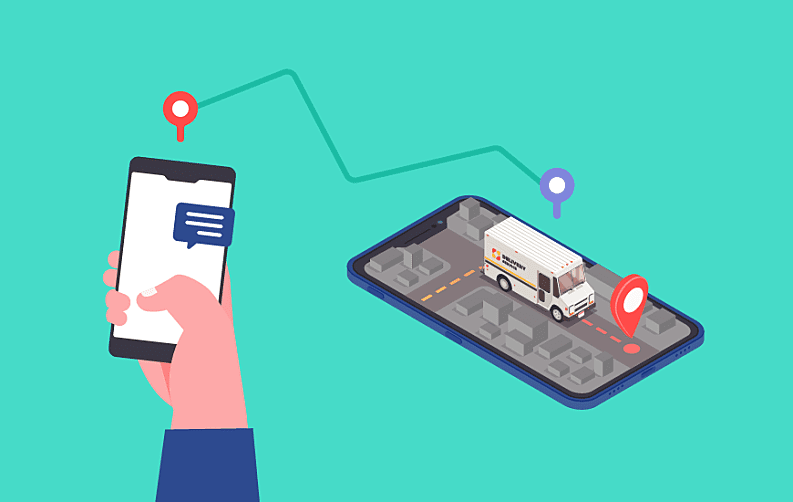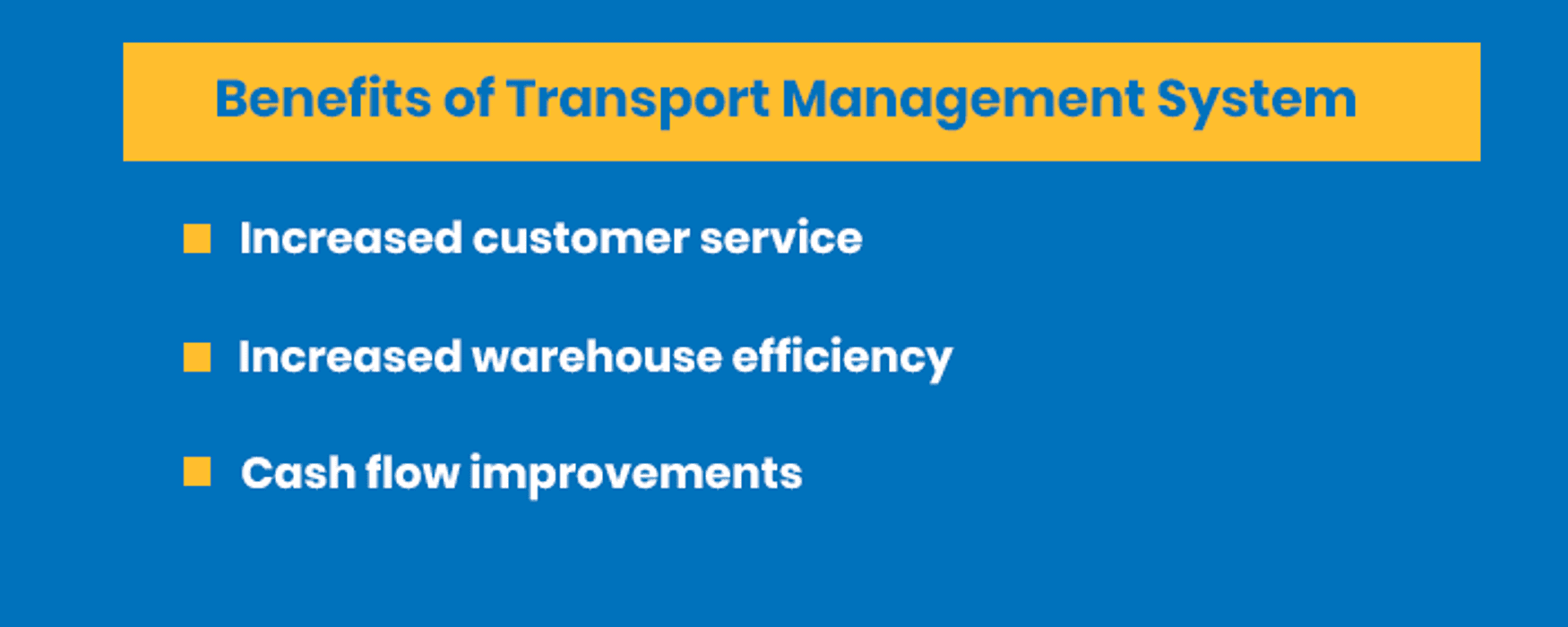
It is a well-established fact that logistics are responsible for driving many businesses worldwide. This becomes highly significant when we look at the fact of how many entrepreneurs think of widening their footprints across different geographic locations. This is the part where the transportation and logistics sector comes into the picture.
As per a recent survey that was conducted in the logistics and transportation industry sector in the U.S., it was revealed that the spending done in this industry makes a total of 8 percent of the total GDP of the nation. Apart from this, we at MobileAppDaily have also covered many different mobile industry verticals including blockchain and IoT (Internet of Things).
Over the last few years, transportation has turned itself into a huge market that is currently highly accepting the culture of Web and mobile apps, a great example of which are ride-hailing apps like Uber and Lyft. So it wouldn't exactly come as a surprise that the logistics industry is also heavily investing in the technology of mobile devices by building apps for mobile devices.

The above image was released by Statista as part of a report featuring the leading logistics companies in the United States for the year 2018, mainly based on North American net revenue in U.S. dollars (millions).
Key Technologies Of A Logistics App
Logistics can be simply referred to managing the transportation of goods as well as materials. This also involves many different processes such as warehousing, material handling, supply chain management (SCM) etc. But to simplify and smoothen out these operations, we require the logistics domain along with technical support.
In order to get a better understanding of this topic, let's have a look at some of the essential features and technologies that are required in a logistics application:
1. Route Optimization With Traffic Information
One of the key features that are required is the option of route optimization that can be done with the help of the data received as traffic information. This is crucial because time is the main factor here as logistics are highly dependent on it. For instance, the timely arrival of cargo is required by logistics professionals to create a proper process flow.

Here, truck drivers do not have anything special by which they can predict traffic on their route ahead. This may further lead to getting stuck in traffic jams which further lead to delays in shipments and eventually the business suffers from financial losses. But with the help of traffic information, all of this can be avoided.
This traffic information contributes to the process of route optimization, and truck drivers can find out the fastest route possible to reach their destination while avoiding potential traffic jams.
At this point, the data can be easily accessed through Google Maps and to offer effective real-time traffic information, the tech giant acquired Zipdash for the sole purpose of displaying real-time conditions on major roads and highways in various countries.
2. Location Tracking
Location tracking can also be referred to as a basic feature in a logistics app that can basically solve various issues. For instance, the app developer can easily monitor the location of the truck and make predictions about the timing of its arrival.
If there is a case of the truck breaking down then a dispatcher can be called and informed about where the breakdown happened and this will also help them in finding the nearest service center.

The above image depicts the process of location tracking, what are the factors that take part in the process and how the process takes place. Cloud server, GPS satellite, cellular tower are some of the main components of this procedure.
This feature of location tracking can also help to make the communication more steady and accurate while avoiding financial losses due or even delay in the shipments. Here cellular tracking in logistics relies heavily on the coverage of the cellular network; this is why the range of connectivity can vary as per location. A mobile device or smartphone first transmits vehicle location or coordinates to a server through a cellular network, which further enables real-time location tracking.
3. Fleet Management
Now that we have discussed logistics app features like tracking information and route optimization, it is time we move on to another effective application development feature i.e. fleet management.
Other than tracking the location and getting traffic info, services engaged in freight transportation In addition to the fact, the fleet management option also contributes in improving the fleet performance by making use of an array of mobile fleet management tools.

This can be referred to as an effective as well as an efficient way to raise awareness about the wear and tear that takes place on vehicles. This can be avoided in the process of logistics app development i.e. creating a transport and logistics app by making use if the management tools.
Let's consider a case when the driver cannot meet the deadlines of the delivery for some reason or reach its destination at the designated time. So the dashboards in these management tools collect information and display it in the form of reports.
4. Asset Tracking and Management
For logistics companies and emerging startups that deliver advanced logistics solutions, features of asset tracking and management cannot be missed. The primary purpose of this feature in a mobile app for transportation service is to manage the review which consists of trucking equipment, load carrying units, cargo etc..

With the help of asset mobile tracking and management option, the user can also combine vehicle location with inventory management to make the identification process of physical location simpler.
Another plus point of this logistics App Development feature is that it helps build trust between end-users and logistics companies. Therefore the user can track the location of their shipment at any time under any condition and this is where supply chain visibility is a great advantage for a logistics and transportation company.
A big thanks to the beacons technology that you can now easily track and also locate assets in several warehouses. The total distance between beacons can range and mainly depends on the technical characteristics of the system, for example, it can exceed 150 meters.
5. Security Factor
In recent times, we have witnessed some large-scale hacking attacks targeted at organizations that belong from various industry verticals, which also includes logistics companies as well. This has resulted in companies paying more attention to the security factor regarding logistics and transportation app development.
For this purpose, many innovative security measures have been implemented to offer special protection to the private data and personal information of the end-users.
6. Transportation Management System
In addition to the point discussed above, the users can also avoid these security hazards, by opting for TMS also known as a transport management system. To build TMS, users have the option of choosing a reliable mobile app development company developing a transportation service that specializes in fields like data encryption.

Know the concepts of data encryption will surely help you in understanding more about how you can design and develop a logistics application that is secure. And in the case of web applications, the user can also think about getting an SSL certificate.
Key Takeaways
Below are some of the key takeaways from the entire article based on the technologies that power the logistics app development:
- Logistics is being used by companies to spread global footprints.
- Transportation & Logistics industry makes a significant contribution to the total GDP of a developed nation for example USA.
- Taxi booking apps like Lyft and Uber can be classified as an example of transportation mobile apps.
- Route optimization can be initiated with the help of data received as traffic information.
- Location tracking is a basic feature in a logistics app that can simply act as a solution to various requirements.
- With the help of fleet management tools, you can improve the overall performance of the application.
- Asset tracking & management is essential for advanced logistics solutions.
- TMS i.e. transportation management system can help in preventing security breaches.
- Data encryption plays a crucial role when it comes to developing a secure logistics app.
So these were some of the worth-mentioning features along with the logistics app development technologies that should be considered while creating a transportation or logistics application.
And if you are interested in reading more informative articles on topics directly related to the world of mobile applications then make sure you click on that ‘Subscribe’ button and stay up-to-date with each & every update of MobileAppDaily.















